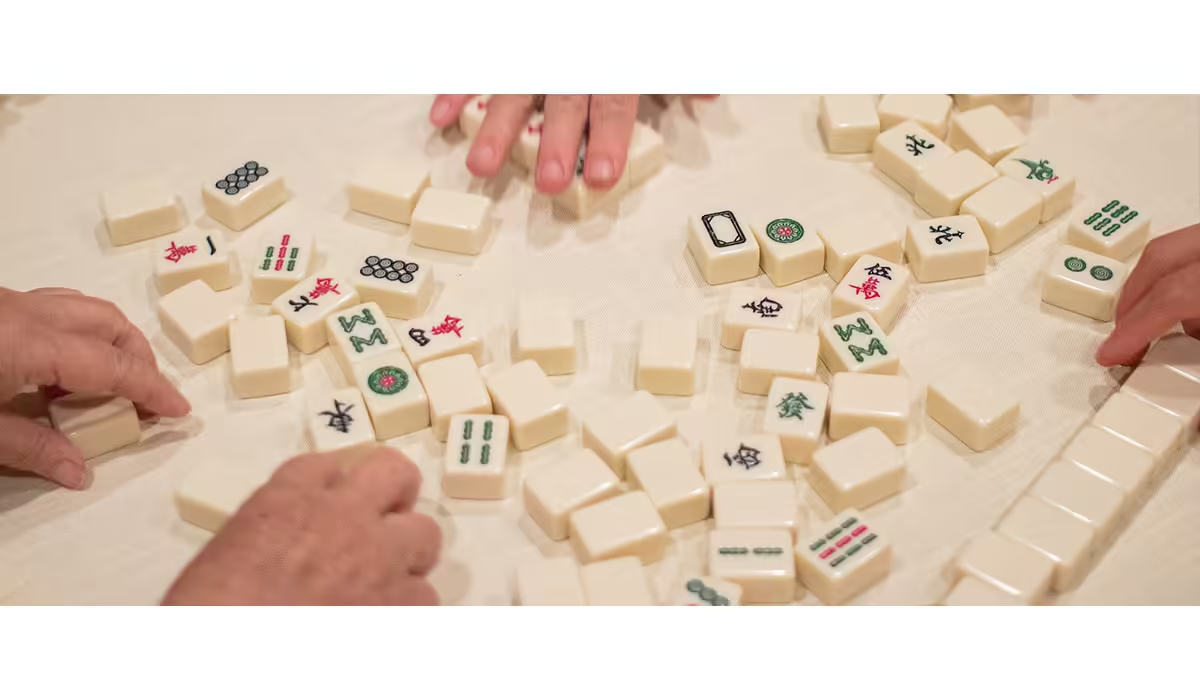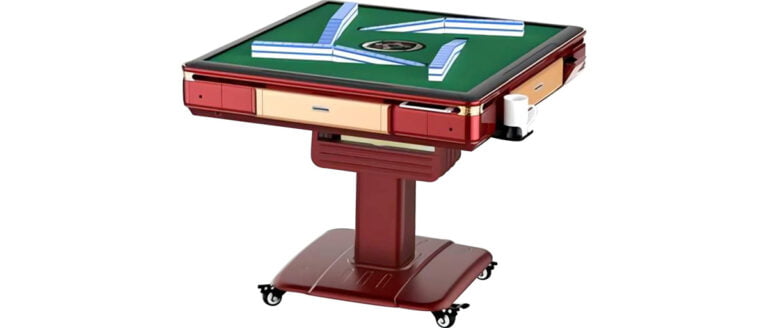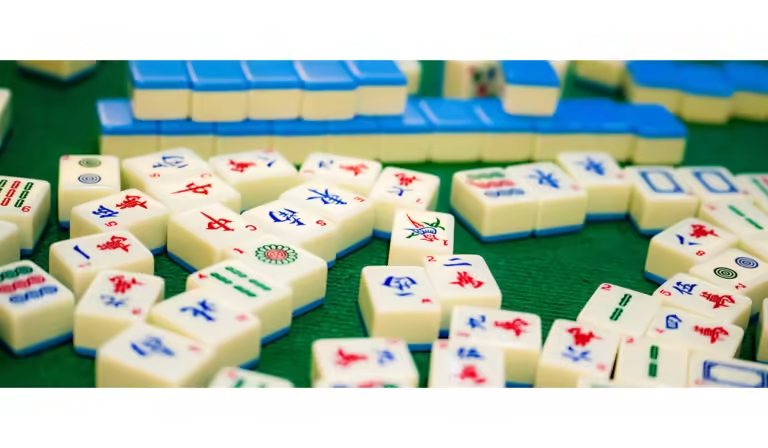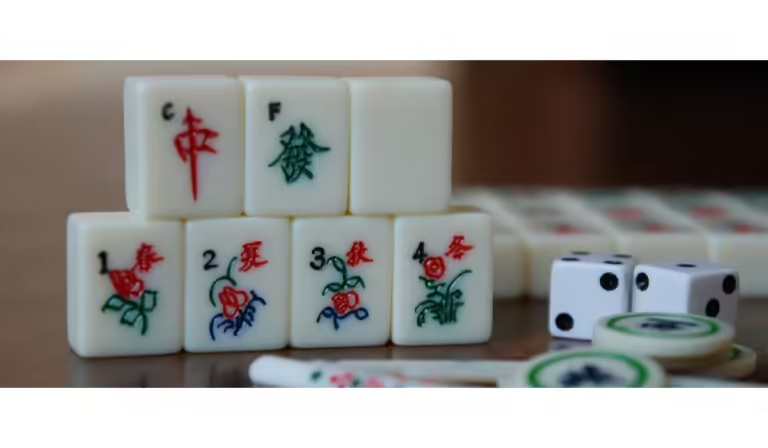Mahjong is a fascinating and strategic tile-based game that originated in China. While it is traditionally played with four players, it is also possible to enjoy a thrilling game with just three players. In this article, we will delve into the rules and strategies of playing Mahjong with three players, providing you with a comprehensive guide to enhance your gaming experience.
Table of Contents
Understanding the Basics
Before diving into the intricacies of playing Mahjong with three players, let’s ensure that we are well-versed in the fundamental concepts of the game.
- Tiles: A standard set of Mahjong tiles consists of 144 tiles divided into different suits and categories, including bamboo, characters, dots, winds, dragons, and flowers. These tiles are the building blocks of the game, and understanding their composition is crucial to playing Mahjong effectively.
- Deal: In Mahjong, each player starts with 13 tiles, and the goal is to create sets and runs to ultimately form a winning hand. Sets are composed of three identical tiles, while runs consist of three consecutive tiles from the same suit. By strategically arranging and rearranging tiles, players aim to create a winning hand that meets specific criteria.
- Turns: Mahjong is played in turns, with players drawing and discarding tiles to create their desired hand combinations. Each turn requires careful consideration, as players must decide whether to draw a tile from the wall or pick up a discarded tile. This decision-making process is crucial to building a winning hand and outmaneuvering opponents.
Modifying the Game for Three Players
To adapt Mahjong for three players, a few adjustments need to be made compared to the traditional four-player game. These modifications ensure that each player has an equal opportunity to win and maintain the strategic essence of the game.
- Reduced Tile Set: To accommodate for three players, some tile sets remove certain tiles from the standard 144-tile set, usually reducing the number to 108 tiles. This ensures that the game remains balanced and fair. It’s important to note that the specific tiles removed may vary depending on the variation of three-player Mahjong being played.
- Dealer’s Turn: In a three-player game, the dealer’s turn alternates between each round. This means that the player to the right of the dealer will become the next dealer in the following round. This rotation ensures that each player has an equal opportunity to be the dealer and adds an element of fairness to the game.
- Extra Joker Tile: Some variations of three-player Mahjong introduce an additional tile known as the joker tile. This tile can be used to replace any other tile to form sets or runs, adding an extra layer of strategy to the game. The joker tile provides players with more flexibility in creating winning hands and can be a game-changer in certain situations.
Starting the Game
Now that we understand the basic adjustments for three-player Mahjong, let’s explore how the game begins and progresses.
- Setting up: To start the game, shuffle the tiles and arrange them face-down on the table. Each player then builds a wall by stacking the tiles in two rows, creating a square shape. The players should sit at the sides of the wall they did not build. This setup ensures that each player has equal access to the tiles and maintains a fair playing field.
- Dealing Tiles: Starting with the dealer, each player receives 13 tiles, one at a time, until all players have their initial hands. The dealer distributes the tiles in a clockwise direction, ensuring that each player receives an equal number of tiles to begin the game.
- Building the Wall: After receiving the tiles, each player should use their remaining tiles to build a wall in front of them. The wall should consist of two rows of tiles, each facing the player, and extending outwards from the center of the table. This wall serves as a source of tiles that players can draw from during the game.
Gameplay and Objectives
The objective of three-player Mahjong remains the same as the traditional version – to create sets and runs and ultimately form a complete winning hand. However, there are a few key differences in gameplay that you should be aware of:
- Melds and Pungs: In three-player Mahjong, a player can only create a meld or pung by using two identical tiles and a joker tile, if available. This allows for more flexibility in forming sets and runs. Melds are sets of three identical tiles, while pungs are sets of three identical tiles with an additional tile of the same suit.
- Exposing Tiles: When a player creates a set or run, they must expose the tiles by placing them face-up in front of them. This allows other players to see the combinations they are creating and adjust their strategies accordingly. By exposing tiles, players can gain insights into their opponents’ hands and make informed decisions on which tiles to discard or keep.
- Discarding Tiles: As with the traditional game, players take turns to draw tiles from the wall or pick up discarded tiles from previous players. However, in three-player Mahjong, the discard pile may be shuffled by the player picking up a discarded tile, making the game even more unpredictable. This adds an element of surprise and strategy, as players must adapt to the changing composition of the discard pile.
Winning the Game
To win a game of three-player Mahjong, a player must form a complete hand consisting of four sets and one pair. It is essential to familiarize yourself with the different types of winning hands, as they vary across different variations of Mahjong.
- Standard Winning Hand: A standard winning hand consists of four sets (melds or pungs) and one pair. Each set must consist of three tiles, except for the pair, which consists of two identical tiles. By strategically collecting and arranging tiles, players aim to achieve a standard winning hand and declare victory.
- Special Winning Hands: Some variations of Mahjong feature special winning hands, such as the Thirteen Orphans or All Pungs hand. These hands require specific combinations of tiles and often result in higher point values. Achieving a special winning hand can be challenging but rewarding, as it showcases advanced gameplay skills and strategic thinking.
Conclusion
Playing Mahjong with three players provides a fantastic opportunity to enjoy this ancient game in a slightly different format. By modifying the tile set, adapting the dealer’s turn, and introducing a joker tile, three-player Mahjong ensures an engaging and strategic gameplay experience. Remember to familiarize yourself with the adjustments, understand the gameplay nuances, and strive to form a winning hand. So gather two friends, set up the tiles, and embark on a thrilling Mahjong adventure with three players!
FAQ
Q: How many tiles are in a set of Mahjong?
A: A set of Mahjong typically consists of 144 tiles.
Q: How many main types of tiles are there in Mahjong?
A: There are three main types of tiles in Mahjong: suits, honors, and bonus tiles.
Q: How many tiles are dealt to each player in Mahjong with three players?
A: In Mahjong with three players, each player is dealt 14 tiles.
Q: How is the dealer determined in Mahjong?
A: The dealer in Mahjong is determined by rolling the dice, and the player with the highest number becomes the dealer.
Affiliate Disclosure
Some of the links on MahjongGames.net are affiliate links. This means that we may earn a small commission if you click through and make a purchase, at no additional cost to you. Please note that our product reviews and roundups are independent, and the affiliate relationships do not influence our content in any way.
MahjongGames.net is a participant in the Amazon Services LLC Associates Program, an affiliate advertising program designed to provide a means for sites to earn advertising fees by advertising and linking to Amazon.com.
Amazon and the Amazon logo are trademarks of Amazon.com, Inc. or its affiliates.
Our passion for games extends far beyond the mah jong table. We’ll be your trusted companion, on a journey through the enchanting realms of not only mahjong but also backgammon, dominoes, chess, checkers, and a diverse array of other captivating board games.
Whether you’re in search of the ideal chess set, a luxury backgammon set, a chinese checkers set, a checkers set, or if you’re seeking the excitement of a thrilling game of mahjong solitaire, we’ll guide you along the way. In partnership with our affiliates, we bring you an extensive selection of board games and past times to explore and enjoy.
Dive into our extensive collection of guides and reviews, and unlock the joy and exhilaration that board games offer. From exquisitely crafted game pieces to the essential accessories that elevate your gaming experience, we’re here to guide you through it all with ease and delight.
Join us in celebrating the timeless allure and camaraderie that these games nurture, one post at a time!





